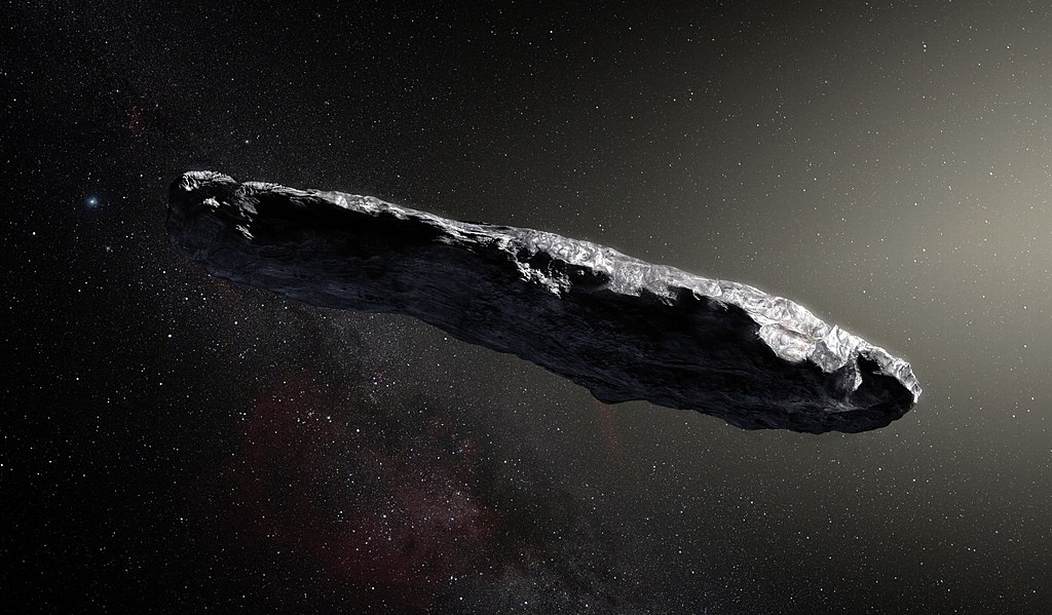This week, the Senate Armed Services Committee will hold open hearings on unidentified anomalous phenomena, or UAPs. The Emerging Threats and Capabilities subcommittee chaired by Sen. Kristen Gillibrand (N.Y.) will hold hearings to resolve some funding issues with the All-domain Anomaly Resolution Office (AARO) which has been gathering information from hundreds of sightings of UFOs over the last several years.
Gillibrand and the senators are likely to get an earful about a draft paper circulating in scientific circles that posits the theory that the UAP sightings being seen by U.S. military personnel and civilians are actually probes from a “mothership.”
The paper is authored by Harvard astronomer Avi Loeb and AARO chief Sean Kirkpatrick. Physical Constraints on Unidentified Aerial Phenomena tries to explain the fact that many of these UAP sightings feature aircraft actually defying the laws of physics.
The document has not been peer-reviewed, nor is it an official Pentagon document. It was carried out in partnership with the DoD. But there is a lot of serious buzz being created by serious people about this five-page paper by two noted scientists,
Dr. Loeb has an “outside the box” kind of brain as evidenced by his conclusions about a rogue asteroid first glimpsed in 2017 which was found to have originated in another galaxy that he claimed may have been an inhabited spaceship.
Loeb is known for his research into ‘Oumuamua — an interstellar visitor from beyond the solar system. Astronomers first detected the cigar-shaped object in 2017 and originally thought it was a comet. However, its elongated shape, its lack of coma (the cloud of gases that envelope a comet), and the fact that it was accelerating away from the sun raised questions about the comet theory. Loeb suggested instead that ‘Oumuamua was an alien spaceship.
He got the idea after another interstellar meteor — not connected to Oumuamua — crashed into the earth a few months later.
That coincidence inspired him “to consider the possibility that an artificial interstellar object could potentially be a parent craft that releases many small probes during its close passage to Earth, an operational construct not too dissimilar from NASA missions,” Loeb told Live Science in an email. “These ‘dandelion seeds’… could be separated from the parent craft by the tidal gravitational force of the Sun or by a maneuvering capability.”
The “dandelion seeds” theory is “out there” but “provocative” according to a critical letter in Nature Astronomy in 2019. A paper published in Astronomy and Astrophysics claimed that “Given the likely cosmological timescales required to traverse between stars, we conclude that it is unlikely that ‘Oumuamua has been sent by an extraterrestrial civilization and more likely that it is just an unusually shaped rock, which has happened to wander into the solar system.’”
So Loeb is no stranger to the theory of extraterrestrials using “dandelion seeds” to explore the earth and other rocky planets in our solar system.
In the draft paper, Loeb and Kirkpatrick looked at Unidentified Anomalous Phenomena (UAPs, the government’s preferred term for UFOs) confined by known physics. The authors suggest the dandelion seed probes could reach Earth for exploration without being detected by astronomers as they would likely be too small to reflect enough sunlight for survey telescopes to detect.
“Equipped with a large surface-to-mass ratio of a parachute, technological ‘dandelion seeds’ could slow down in the Earth’s atmosphere to avoid burnup and then pursue their objectives wherever they land,” they wrote.
What makes the paper important is that some scientists, at least, are beginning to explore ideas on the fringe of science without being intimidated by the establishment. The aircraft performing maneuvers that clearly defy the laws of physics are facts. They have been observed, measured, and theories have been promulgated trying to explain what our eyes and numerous scientific instruments are showing us.
Why not a “dandelion seed”?










Join the conversation as a VIP Member